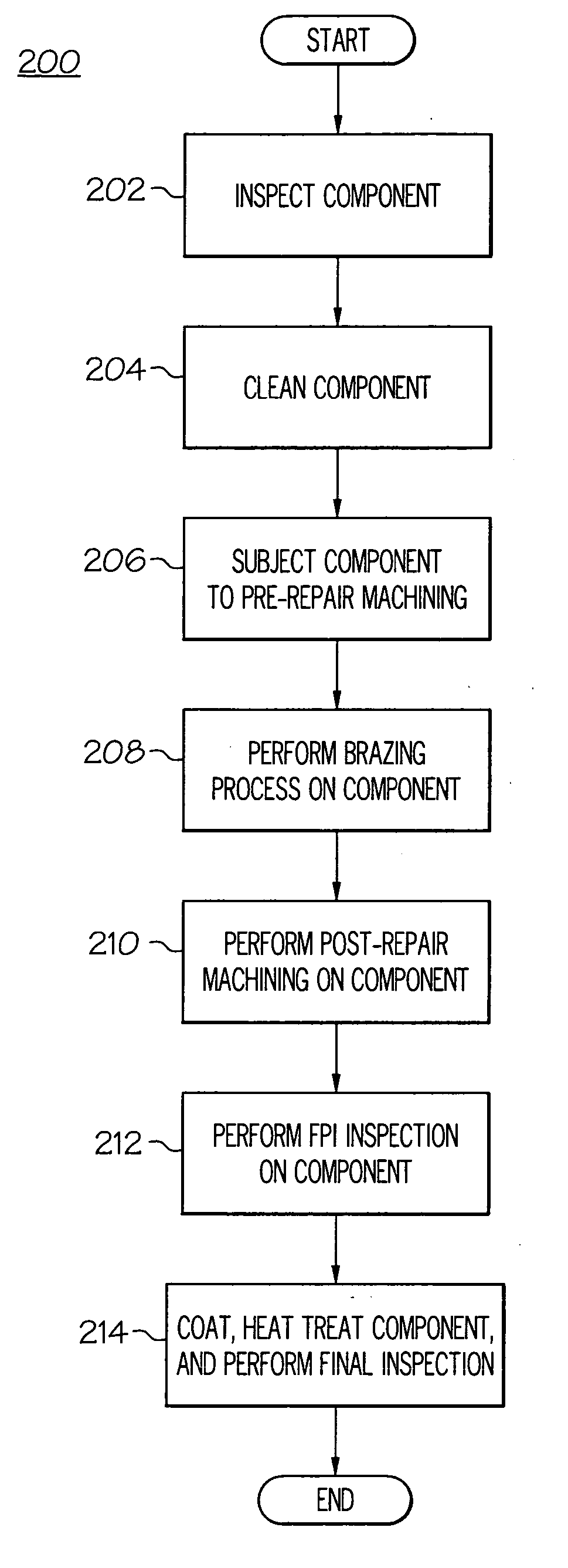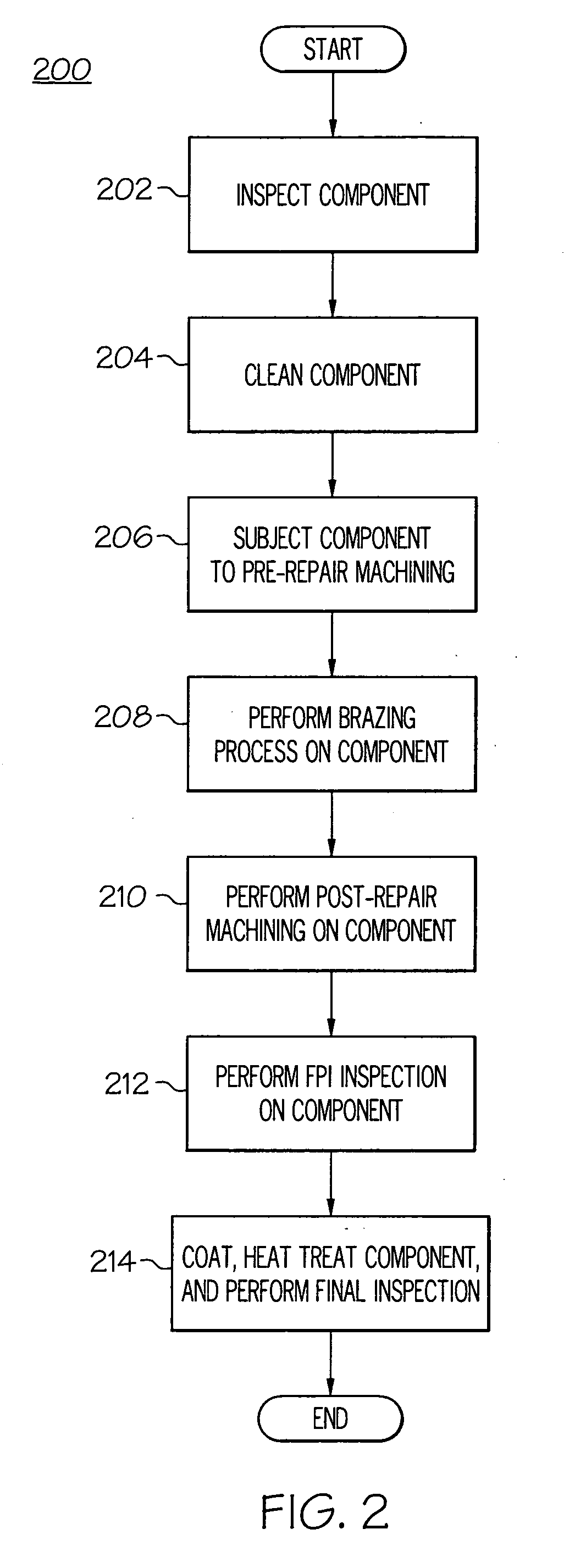Activated diffusion brazing alloys and repair process
a technology of activation diffusion and brazing alloys, applied in the direction of welding/cutting media/materials, manufacturing tools, welding apparatus, etc., can solve the problems of corrosion, oxidation, thermal fatigue and erosion damage, etc., and achieve the metallurgical integrity and performance of the repaired components that may be inferior to the metallurgical integrity of the base materials
- Summary
- Abstract
- Description
- Claims
- Application Information
AI Technical Summary
Benefits of technology
Problems solved by technology
Method used
Image
Examples
example 1
[0032] In one example, samples were used that comprised a SC-180 single crystal superalloy substrate having a nominal composition of about 10% by weight Co, about 5% by weight Cr, about 1.7% by weight Mo, about 5% by weight W, about 3% by weight Re, about 8.5% by weight Ta, about 5.2% by weight Al, about 1.0% by weight Ti, about 0.1% by weight Hf and balance Ni. A repair alloy mixture was prepared including about 50% by weight of a high-melt alloy comprising MarM247 and about 50% by weight of a low-melt alloy formulated as the composition disclosed in Embodiment 1 in Table 1 above. The repair alloy mixture was also mixed with a chemical binder to make a paste, where the repair alloy mixture made up about 88% of the paste and the binder made up about 12% of the paste. The samples each had a 0.010-inch wide crack that was filled with the repair alloy paste. The samples were heated to 1000° F. for 15 minutes in order to bum off the organic binder in the brazing paste. The temperature w...
example 2
[0034] In another example, samples were used that were made of a MarM247 superalloy, having a nominal composition of about 10% by weight Co, about 8.0% by weight Cr, about 0.6% by weight Mo, about 10% by weight W, about 3.0% by weight Ta, about 5.6% by weight Al, about 1.0% by weight Ti, about 1.5% by weight Hf, about 0.15% by weight C about 0.05% by weight Zr, about 0.015% by weight B, and balance Ni. A repair alloy mixture was made that included about 50% by weight of a high-melt alloy comprising MarM247 and about 50% by weight of a low-melt alloy disclosed as Embodiment 1 under Table 1 above. The repair alloy mixture was mixed with a chemical binder to make a paste, in which the repair alloy mixture made up about 88% by weight and the binder made up about 12% by weight of the paste. The samples included a 0.010-inch wide crack that was filled with the repaired alloy paste. The samples were heated to 1000° F. and held for about 15 minutes in order to burn off an organic binder tha...
PUM
| Property | Measurement | Unit |
|---|---|---|
| temperature | aaaaa | aaaaa |
| temperature | aaaaa | aaaaa |
| temperature | aaaaa | aaaaa |
Abstract
Description
Claims
Application Information
 Login to View More
Login to View More - R&D
- Intellectual Property
- Life Sciences
- Materials
- Tech Scout
- Unparalleled Data Quality
- Higher Quality Content
- 60% Fewer Hallucinations
Browse by: Latest US Patents, China's latest patents, Technical Efficacy Thesaurus, Application Domain, Technology Topic, Popular Technical Reports.
© 2025 PatSnap. All rights reserved.Legal|Privacy policy|Modern Slavery Act Transparency Statement|Sitemap|About US| Contact US: help@patsnap.com



